About the Norwegian Twin Registry
Article
|Published
The Norwegian Twin Registry aims to create a national and international scientific resource that brings together and builds upon data, biobank material and competence from all three Norwegian twin panels.
The value of twin-data for understanding genetic and environmental influences on complex diseases has been well recognized for decades but has grown considerably in the wake of new methods (e.g. epigenetics, CNV) for which twin data are in particular demand.
Norway has a long-standing tradition in twin research, but the data collected in several population-based twin studies were not coordinated centrally or easily accessible to the scientific community.
In 2009, the Norwegian Twin Registry was established at the Norwegian Institute of Public Health (NIPH) in Oslo with the purpose of creating a single research resource for Norwegian twin data. As of today, the Norwegian Twin Registry contains 47,989 twins covering birth years 1895–1960 and 1967–1979; 31,440 of these twins consented to participate in health-related research. In addition, DNA from approximately 4,800 of the twins is banked at the NIPH biobank and new studies are continually adding new data to the registry.
The value of the Norwegian twin data is greatly enhanced by the linkage opportunities offered by Norway's many nationwide registries, spanning a broad array of medical, demographic, and socioeconomic information.
Review articles on Norwegian twin data:
The Norwegian Twin Registry
Nilsen TS, Brandt I, Magnus P, Harris JR.Twin Res Hum Genet. 2012 Dec;15(6):775-80.The Norwegian twin registry from a public health perspective: a research update
Nilsen TS, Knudsen GP, Gervin K, Brandt I, Røysamb E, Tambs K, Orstavik R, Lyle R, Reichborn-Kjennerud T, Magnus P, Harris JR. Twin Res Hum Genet. 2013 Feb;16(1):285-95.The Norwegian Institute of Public Health twin program of research: An update
Harris JR, Magnus P, Tambs K. Twin Res Hum Genet. 2006 Dec;9(6):858-64.- Norwegian Twin Registers and Norwegian twin studies - an overview
Bergem AL. Twin Res. 2002 Oct;5(5):407-14. Review. - The Norwegian Institute of Public Health Twin Panel: A description of the sample and program of research
Harris JR, Magnus P, Tambs K. Twin Res. 2002 Oct;5(5):415-23. Review.
Researchers with an interest in using Norwegian twin data should consult with NTR before any application is submitted. Contact information: twin.registry@fhi.no


